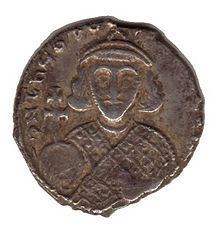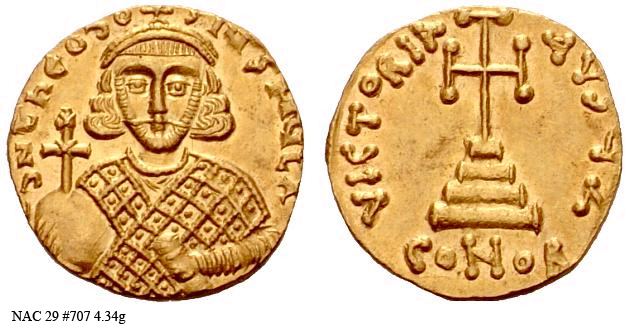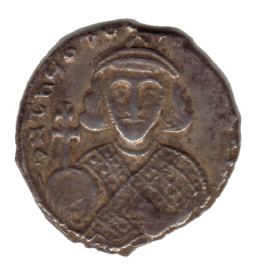Reign May 715 – 25 March 717 Successor Leo III the Isaurian Died Ephesus | Role Roman emperor Name Theodosius III Predecessor Anastasios II | |
 | ||
Similar People Leo III the Isaurian, Constantine V, Constantine XI Palaiologos | ||
Theodosius III: The Reluctant Emperor
Theodosios III or Theodosius III (Greek: Θεοδόσιος Γ΄) was Byzantine Emperor from 715 to 25 March 717.
Contents

Biography

Theodosius was a financial officer and tax collector in the southern portion of the theme of Opsikion. According to one theory, he was the son of the former Emperor Tiberius III. According to another theory, he was of low extraction. When the thematic troops rebelled against Emperor Anastasius II, Theodosius was chosen as emperor. He did not readily accept this choice and, according to the chronicler Theophanes the Confessor, even attempted to hide in the forests near Adramyttium. Eventually he was found and was acclaimed emperor in May 715.
Theodosius and his troops immediately laid siege to Constantinople. Six months later, in November, they gained entry to the city. Theodosius showed himself remarkably moderate in his treatment of his predecessor and his supporters. Through the intercession of Patriarch Germanus I of Constantinople, Anastasius II was convinced to abdicate and become a monk in Thessalonica.
Little is known of Theodosius' short reign. He immediately faced an Arab invasion deep into Anatolia and the advance of the Arab fleet. In 716 he concluded a treaty with Tervel of Bulgaria favorable to the Bulgarians in an effort to secure support against the Arab invasion. This policy paid off in 719 when they helped relieve the Second Arab siege of Constantinople. In 717, the strategos of the Anatolic Theme, Leo the Isaurian (the future Leo III), rebelled against Theodosius' rule in collusion with Artabasdos, the strategos of the Armeniac Theme. Theodosius' son was captured by Leo in Nicomedia, and Theodosius chose to resign the throne on 25 March 717. He and his son subsequently entered the clergy.
The resignation of Theodosius III ended a string of short-lived and ineffective rulers often skipped over in history books. In his History of the Byzantine Empire, Vol. 1, A. A. Vasiliev says only "The state of anarchy which prevailed in the Byzantine Empire from 695 ended in 717 with the ascension of the famous ruler Leo III," disregarding any individual importance in the Emperors of that period.
By 729 Theodosius is believed to have become bishop of Ephesus. Modern historians however suspect the bishop was actually his son. Either way, this bishop was last recorded alive on 24 July 754, taking part in the iconoclastic Council of Hieria.
By his unnamed wife, Theodosius III was the father of at least one son, Theodosius (monastic name), perhaps the bishop in question.
